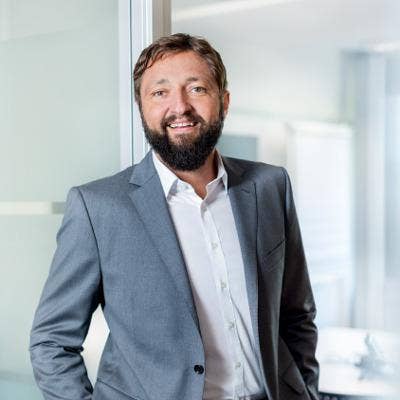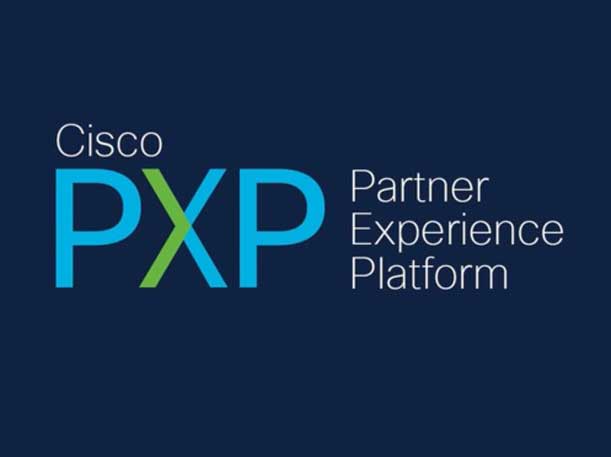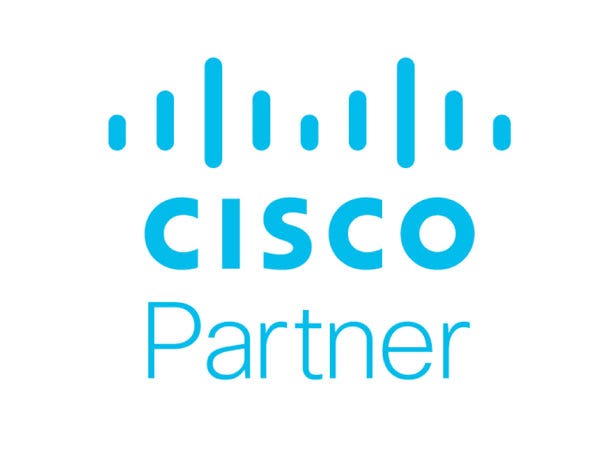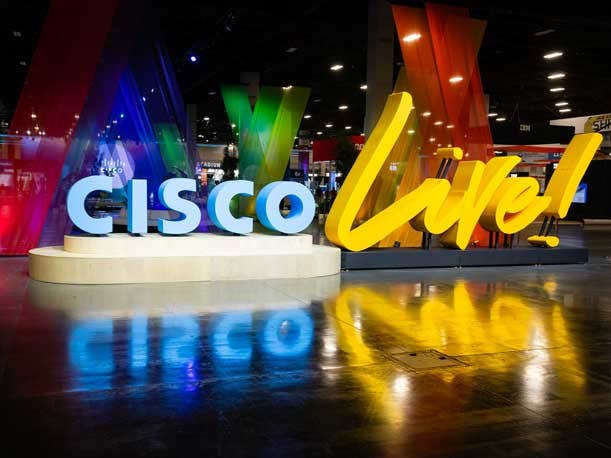Cisco Channel Chief Tuszik On Networking Cloud, FSO, And How Generative AI Can Help Partners Grow Their Businesses
“When you look at the Cisco Live announcements; if it’s Networking Cloud, the security piece, what we’re doing with Webex or FSO, they all are offers, rather, solutions that we bring into the market that are ready to be delivered in a managed-as-a-service motion,” Cisco Channel leader Oliver Tuszik told CRN.

Coming off another jam-packed Cisco Live, the company’s Channel Chief Oliver Tuszik is more convinced than ever that the age of the partner is alive and very well.
That’s because the long list of announcements, launches, and innovations unveiled at the show have one thing in common: They require channel partners’ expertise for successful deployment and management.
At the event this week, Cisco Networking Cloud was introduced, a platform strategy to help customers consolidate their networking environments and in time manage their networking environments from one place. Like Cisco Security Cloud, the platform approach to networking opens many doors for partners.
The tech giant also launched a vendor-agnostic full stack observability (FSO) platform to bring together contextual and predictive insights so that businesses can solve problems faster and optimize end-user experiences -- another huge area of opportunity for partners whose customers are looking at all avenues of improving customer experience. And it goes without saying that security is a primary area of interest for customers, making it crucial to partners. To that end, Cisco unveiled a new security service edge offering, a multi-cloud security feature and a firewall series aimed at applications and multi-cloud environments.
Customers are facing indisputable challenges, from talent shortage issues to trying to do more with less. Those are challenges that Cisco is speaking to with its technology and, in turn, relying on its partner ecosystem to heed the call with their valued-added services. Tuszik sat down with CRN to talk about Cisco’s platform approach to networking and security, the opportunity around full stack observability, and the changes that the tech giant’s Global Partner Organization has made to help partners grow their businesses.
Here’s what Tuszik had to say:

Why is it so critical for partners to help customers shift to a unified approach to networking and security management?
Networking Cloud is an approach that we’ve been driving for a while now as we move more and more our offerings into one dashboard. Easier to integrate, easier to manage. And we’re doing the same on the security side. Especially on the security side, all our customers have a zoo of vendors right now and they can’t manage the complexity any longer. To manage end-to-end security, you need to have a better integration platform and you need to have an open system that is able to integrate threat data from other applications.
We have a lot of great security products and we’ve acquired other great security products. But we could see the demand from the customer side shifting [toward] an end-to-end platform approach. We started with the announcement last year to build a more platform-focused approach [to security], which ends with our entire [security] portfolio coming, more or less, down to three suites. You’ll see us doubling down on this strategy. Don’t get me wrong, we still need to present great products. But the big advantage comes when they play together, when they are an integrated solution, when you don’t need to build an extra team on the customer or partner side to manage the different systems - the different threat responses to collect the data. And that’s where all our strings come together. We see what is happening in the network. Not only in one network, we see across most of the networks in the world, we have the data. And when we bring this all together, we can really help not only to develop individual products, but we can develop an end-to-end security and [networking] motion. And that’s what customers and partners are looking for.

What has the global partner organization had to do internally to prepare for the shift to the platform approach Cisco is pursuing in security, networking, and full stack observability?
The good thing is, we didn’t need to prepare any of our partners because they were asking -- especially with the provider program that is growing massively with all the managed service activity. So we didn’t really need to prepare our partners, they were requesting and waiting for it. But, of course, we changed our programs [and] how we enable partners. We shifted away from the classical enablement model because some of our provider partners, they might be [on the] leading edge in their segment already, so they need different enablement from our side and a flexible pricing model.
We’re also changing the incentive schemes for ourselves to ensure that they are aligned with the way customers want to buy and consume and how our partners deliver the solutions. Last but not least, the platform is one way to reduce complexity. But there’s complexity in many other ways. We took down the efforts for all the certifications. We reduced the efforts for tracking back-end rebates and we improved our tools and platforms when it comes to how a partner manages their business. PXP [Partner Experience Platform] is no longer new, but it is a platform that every day has a new feature, a new kind of report that makes our partners’ life easier.
Everyone is talking about AI and machine learning -- you will be surprised how much of this intelligence is already in our different systems. You will see more of this in the way we do customer and partner support. So there is a lot under the hood. AI isn’t hype [for us]. We continue our way to ensure that we utilize AI in a responsible way to serve our customers.

How is the Partner Organization harnessing AI to help Cisco partners build out their businesses?
We’re offering partners reports to show their performance compared to comparable competitors in the market. For example, you might be a strong player in the public sector in the Southwest, but we see that most of the other public sector partners also have a pretty big security business and you might not. So, you see the other partners are selling security, why aren’t you? We don’t drive decisions for our partners, but we give them better data and insights to derive the right decisions for them. That’s one way where we’re utilizing the power [of AI] and there will be more coming.
The entire AI and machine learning or large language models, they are a huge business opportunity for us and our partners because you need to have completely different capacity in your data centers, you need to have switching capabilities, networks with latency and power that we have never seen before. And with our Silicon One, we have our own chips that we designed just for this, we have an unfair advantage for all of our competitors. We will see more and more of this becoming a very interesting market. And just the demand for these learning models is increasing over the last year, that’s another great opportunity coming up for all of our partners. If we don’t find a way to automate more tasks, to put some more intelligence in other places, we will not be able to drive the ongoing digital transformation.

How big is the full stack observability opportunity for partners right now?
First of all, there’s no doubt the application focus is happening within all companies. It’s the way you interact with your customers and performance of the app is essential. If an app is down or has a stupid mistake, everybody is talking about it and you lose customers. So, if you want to really add value with IT [teams], you will help customers manage the performance of their apps. Not only fixing it when it’s down, but it’s about seeing the problems coming up in the back end and fixing them before the customer has a bad experience. Now, full stack observability is a set which consists of different solutions and we have a lot of the important parts related to the security because that’s one of the biggest threats for application performance. For partners, it’s pretty clear. This is not a solution that you just roll out, install, done. It needs a partner to bring it together to install it in the environment. If [your customer] wants to have end-to-end full stack observability, you need to manage it around the priorities of the company [and] you need to understand what their biggest risk is. So the opportunity, especially on the managed service side, is huge. And it’s interesting, we see more and more of the non-traditional Cisco partners jumping on this one, like consulting companies are seeing this as the biggest area for growth because that’s what a CEO wants to discuss with you. They don’t want to discuss what networking Wi-Fi standard you’re using. They want to understand: ‘How I can ensure that my end user has always the best experience when they [are using] my app?’ What happens if an app isn’t working? You sign into the next one. That’s how you change a company right now.

What’s the message you want partners to leave Cisco Live 2023 with?
Cisco Live is primarily a customer event but the amount of partners that are attending is increasing. Cisco Live is just another step on our road to create a different customer experience together with our partners by reducing complexity, driving simplification and supporting our partners in the way that they serve their customers, no matter if it’s a project business, managed service, selling together with a cloud player, or creating unique offers to create the best customer experience.
When you look at the announcements, if it’s Networking Cloud, the security piece, what we’re doing with Webex or FSO, they all are offers, rather, solutions that we bring into the market that are ready to be delivered in a managed, as-a-service motion. We are helping our partners to deliver these kinds of experiences that customers are looking for, which means an easier way to integrate and manage the complexity, end-to-end security, and then a focus on value and application performance.